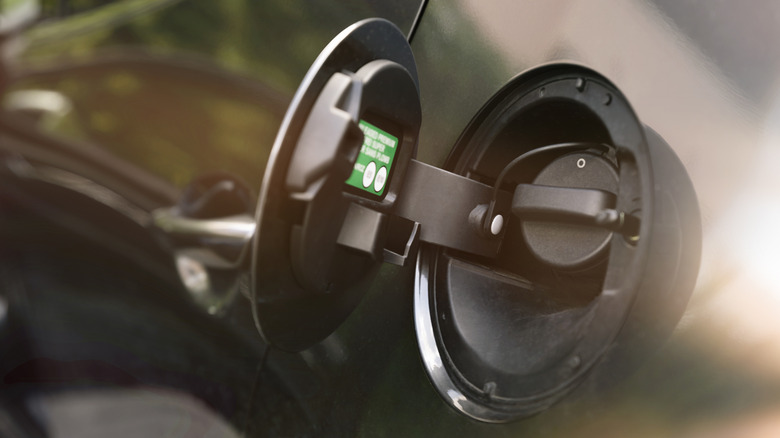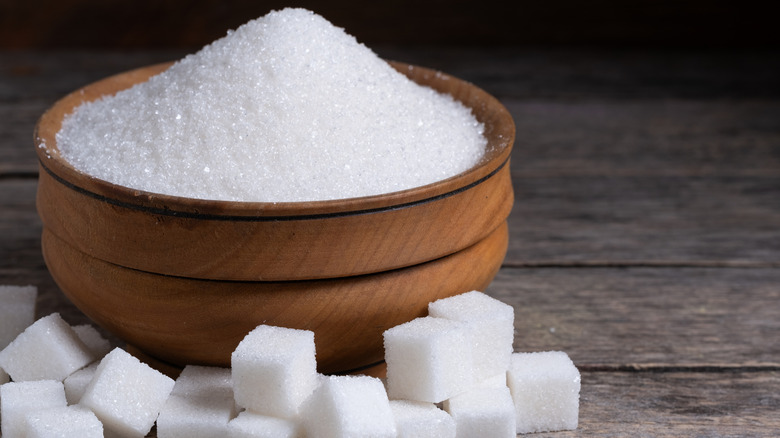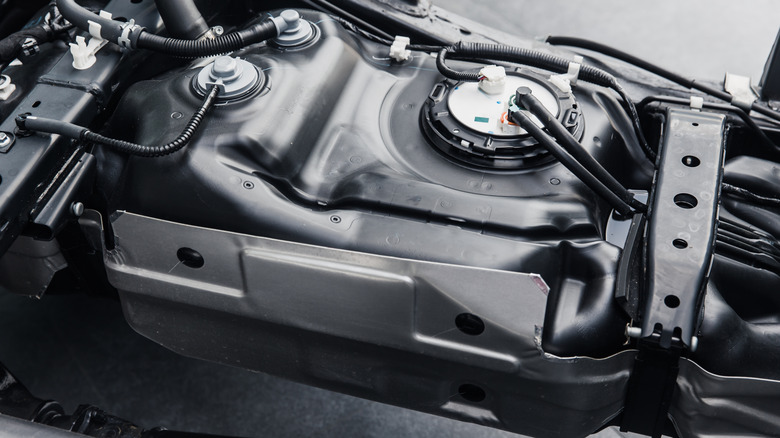Does Sugar In A Gas Tank Really Ruin Your Engine? Here's What Damage It Can Do
It's a classic tale of car sabotage. A crazy person, or someone mad at you, sneaks up in the middle of the night, opens your fuel cap, and dumps a handful of sugar. Your engine is toast by morning. No smoke, no warning, just a flawless Tom-Clancy-level stealthy takedown. Ask around, and most people will tell you it's true, and some even claim it happened to a "friend of a friend."
But that's not how it works. If the saboteur's intention is to dissolve the sugar and create a destructive concoction, it won't work. If you paid attention in chem class, then you know that's simply because gasoline doesn't dissolve sugar. The granulated particles will just end up at the bottom of the gas tank, where, more often than not in such cases, they remain until the tank is nearly empty and the fuel flow stirs them up.
So, the Hollywood-style instant engine death is just another fuel myth, and the quick chem lesson disproves that. Also, modern fuel filters are designed for this very purpose — to screen particles before they enter the engine's combustion chamber. So, it's very unlikely that sugar, whose crystals are way bigger than what fuel filters are designed to catch, ever makes it past the pump. Not unless your fuel filter is compromised.
Sugar can still cause problems, just not in the way most people imagine
While sugar won't choke your engine to death like poison, its presence in a gas tank can still result in costly problems. The trouble won't suddenly escalate to damaging the pistons or seizing the engine. Instead, it begins with a clogged fuel filter or fuel pump strain, before some of the particles eventually find their way to the injectors. You might start to notice rough idling, hesitation when you step on the gas, or even stalling.
At this point, you're now looking at a multi-step repair job, one that will likely involve flashing the tank, replacing the fuel filter, and cleaning injectors, if not replacing them. Additionally, sugar may quicken component failure, especially if the car was already operating lean or had weak filtration. Again, though, that's more about aggravating issues that already existed than sugar's innate ability to damage engines.
For diesel cars, however, sugar in the engine can be more dire, especially since diesel engines operate at greater pressures and have more precise injection tolerances. That means contamination of any kind can be bad news pretty quickly A tiny amount of granules in a common rail diesel engine is more than enough to damage the injectors or the fuel pumps, which tend to be quite costly.
What to do -- and how mechanics fix it
If you think someone may have put sugar (or any other particles) in your gas tank, do not start the engine. Maybe you noticed some residue close to the cap, or your car started stalling out of the blue. Starting your engine could draw sugar into the gas lines, and that could worsen the damage and make it costlier to fix. The best course of action would be to tow your car to a trusted auto shop and explain to the pros what you think transpired.
Once there, a fuel tank inspection and flush will most likely be the first thing the pros do. It may be necessary to remove the tank completely, but that will depend on the amount of sugar added and whether the car was driven afterwards. From there, mechanics then replace the fuel filter (usually the first part to clog) and check for any obstructions in the injectors and fuel lines. In diesel engines or newer cars with delicate parts, the cleanup may also include replacing injectors or pumps and checking fuel pressure, especially if contamination has reached that far.
The cost to get this fixed can vary widely. Repairs for extensive fuel system damage, often involving the injectors or the injector pump, may cost up to $1000 or more. But if a proper fuel drain and filter replacement is all your car needs, it may cost you roughly between $200 and $500.


